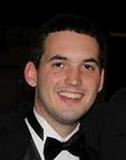Member for
3 years 10 monthsAnnually, rupture of atherosclerotic plaques is the main cause of 19 million deaths attributed to cardiovascular disease. Physicians' inability to locate plaques and assess their likelihood of rupture is an impediment to treatment of this disease. Photoacoustic imaging is a technique by which pulsed light is used to locally heat tissue, producing a thermal expansion that can be measured with an ultrasound transducer. The intensity of the thermal expansion is proportional to the aborption coefficient of the tissue at the light wavelength used for excition. Contrast between tissue types can thus be determined by measuring changes in the intensity of the signal measured by the ultrasound transducer when different wavelengths of light are used. Rupture prone plaques can thus be identified by the significant presence of lipid, which has an absorption spectra that is distinct from other tissues types found in healthy vessels. Tim's current research project focuses on the use of intravascular photoacoustics and ultrasound (which is used to determine general vessel morphology) to image atherosclerotic plaques. Tim works in a subgroup of Dr. Emelianov's lab which uses a catheter based system that combines ultrasound and photoacoustic images. His research work has several dimensions. First, he is using Monte Carlo modeling methods, with experimental validation, to determine the light wavelengths that will optimize lipid contrast. Second, he is completing safety studies in vitro (cell based), ex vivo (porcine aortic vessels), and in vivo (rabbit aortas) to determine if light absorption from photoacoustic imaging causes undesirable side effects in vessel tissue. Third, he is investigating the use of thermal photoacoustics to image lipid, in which temperature changes in the tissue are used to produce contrast instead of different light wavelenghts. Fourth, Tim will be involved in experiments in which the imaging system will be used in vivo. In vivo studies will start with rabbits (normal and atherosclerotic models) and later involve atherosclerotic pigs. Exogenous contrast agents may also be used to enhance contrast.

